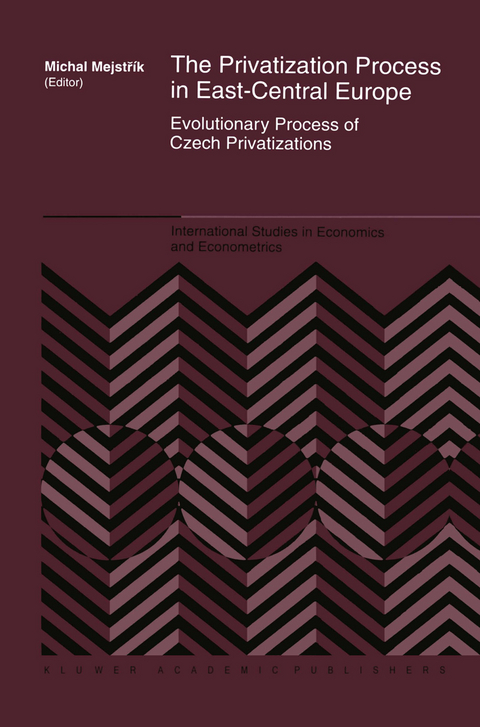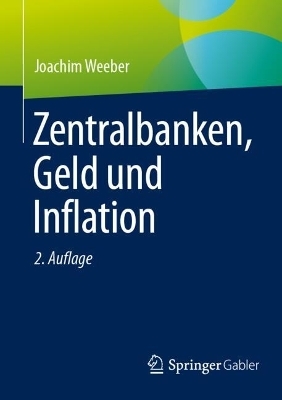
The Privatization Process in East-Central Europe
Springer-Verlag New York Inc.
978-1-4613-7917-1 (ISBN)
1. The Initial Economic Environment for Privatization.- 1.1. Introduction.- 1.2. Initial Conditions for Change of Ownership Relations.- 1.4. Reform Pitfall.- 1.5. Necessary Conditions for Avoiding the Reform Pitfall.- 1.6. Making It Easier to Develop the Private Sector.- 1.7. Foreign Investments and Outside Shocks.- 1.8. Conclusion.- Appendix: Selected Official Indicators for the Czech Republic, 1995..- 2. The Restructuring of Property Rights Through the Institutional Economist’s Eyes.- 2.1. Introduction.- 2.2. The Institution of Property In “Real Socialism”.- 2.3. Restructuring Property Rights: The Alternatives to Institutional Evolution.- 2.4. The Formation of Property Rights Institutions.- 2.5. Some Theoretical Comments on Practical Ways of Reestablishing Property Rights.- 2.6. Instrumental Rationality and Spontaneous Evolution of Institutions: The Moral Dimension of Property.- 3. Initialization of Privatization Through Restitution and Small Privatization.- 3.1. Introduction.- 3.2. Restitution.- 3.3. The Small Privatization Program.- 3.4. Conclusion.- Notes.- 4. Large Privatization: Theory and Practice.- 4.1. Case By Case or Mass Privatization.- 4.2. Voucher Privatization, Ownership Structures, and Emerging Capital Market in the Czech Republic.- 4.3. A Technical Analysis of The Prague Stock Exchange.- 4.4. A Multicriteria Evaluation of Alternative Privatization Methods.- Appendix 4.1. The Criteria Tree Used to Evaluate Privatization Methods by the Expert Choice System.- Appendix 4.2. The Dependence of the Final Ranking of Alternatives on the Global Weight of Social Criteria C1 and C5, All Firms.- Acknowledgment.- 5. Fiscal Impact of Privatization and Fiscal Policy.- 5.1. Introduction.- 5.2. The Macroeconomic Situation.- 5.3. Budget and Tax System Reform.- 5.4.Review of Fiscal Policy For 1990 Through 1995.- 5.5. Privatization.- 5.6. The National Property Fund and Its Ties to the Budget.- 5.7. Development of Budget Revenues and Expenditures.- 5.8. Conclusions.- Notes.- 6. The Emergence of Institutional Owners: The Role of Banks and Nonbanking Financial Institutions in the Privatization of the Economy and the Banks.- 6.1. Introduction.- 6.2. The Czech Financial Institutions after 1989.- 6.3. Compensation for Inherited Debt by the Proceeds of Privatization.- 6.4. Development of the Czech Banking Sector.- 6.5. The Evolutionary Development of the Nonbanking Financial Sector.- 6.6. The Privatization of Major Banking Groups.- 6.7. Further Evolution of Privatized Major Financial Groups.- 6.8. Conclusion.- 7. Privatization, Postprivatization, and Structural Problems.- 7.1. Structural Changes and the Privatization Process.- 7.2. Enterprises Restructuring During and After Privatization.- 7.3. The New Private Sector in the Czech Republic.- 7.4. Monopoly in The Context of the Privatization Process.- 7.5. Monitoring of Borrowers under Asymmetric Information: The Czech Experience in the Early 1990s.- 7.6. The Impact of Privatization and Capital Market Development on Posttransitional Exchange-Rate Policies.- 7.7. The Phillips Curve and Market Structures.- Acknowledgments.- Notes.- References.
| Reihe/Serie | International Studies in Economics and Econometrics ; 36 |
|---|---|
| Zusatzinfo | XVIII, 333 p. |
| Verlagsort | New York, NY |
| Sprache | englisch |
| Maße | 155 x 235 mm |
| Themenwelt | Sozialwissenschaften ► Politik / Verwaltung ► Staat / Verwaltung |
| Sozialwissenschaften ► Soziologie | |
| Wirtschaft ► Volkswirtschaftslehre ► Mikroökonomie | |
| Wirtschaft ► Volkswirtschaftslehre ► Wirtschaftspolitik | |
| ISBN-10 | 1-4613-7917-2 / 1461379172 |
| ISBN-13 | 978-1-4613-7917-1 / 9781461379171 |
| Zustand | Neuware |
| Haben Sie eine Frage zum Produkt? |
aus dem Bereich


